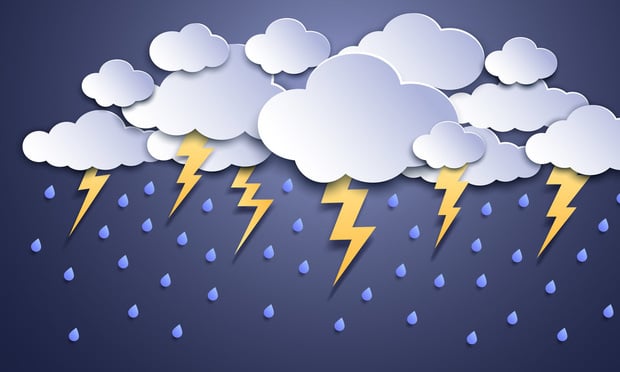With summer in full swing, it is that time of year again in many parts of the country for the dreaded hurricane season. Owning properties in the Atlantic basin comes with an added layer of concern with the peak of the hurricane season running from June into November. While there are only so many precautions that can be taken ahead of a storm, your reaction immediately following a storm may be the most important step to ensuring that your building is properly assessed for damages and completely repaired in a timely manner. One of the main issues in the aftermath of a hurricane that literally goes unseen is mold.
Mold is nature's way of breaking down organic material. Mold is able to grow on nearly any porous surface that has become wet or saturated with water and even though you may not see it or smell it, it is very likely to be present. In wet, humid conditions mold can develop in as little as 24 to 48 hours, which means you need to take measures to stop the growth as quickly as possible. Mold growth has resulted in many health issues. These range from allergies, to significant illnesses. Children are the most susceptible to health issues as a result of poor indoor air quality (IAQ) and exposure to airborne contaminants, including mold spores.
For issues that may not come up during a visual inspection, one way to assess the areas prone to mold growth is through the use of a technology called moisture mapping. Moisture mapping should be one of the first steps taken in the aftermath of a hurricane/flood emergency response protocol. Using moisture mapping technology tools (i.e. moisture meters and IR cameras), experts can evaluate both affected and unaffected building materials for elevated moisture content which could result in mold growth. Based on the findings of this moisture mapping, recommendations can be made for drying methods or a determine can be made regarding the need for immediate remediation (removal of water-impacted materials) to prevent structural instability and the risk of mold growth.
Moisture mapping is necessary to fully understand and determine which building areas and materials are most effected by water damage as well as determining the water migration from one building area and material to another. It can also aid in identifying previously water-impacted materials that have now dried out. Moisture mapping can track the progress of material drying, which is essential in monitoring the possibility of mold growth as well as the need to remove materials, which may then call asbestos regulations into consideration. Mapping is not only important for restoration efforts but as documentation for the owner and their insurance company.
Following the moisture mapping of impacted building areas, it is imperative to remove all significantly impacted cellulose-based (i.e. gypsum, wood, carpet, fabric, etc.) building materials as cleaning the aforementioned materials is generally ineffective. Non-cellulose building materials (i.e. metal, PVC, etc.) may be able to be cleaned and/or dried. Prior to removing the impacted building materials, they should all be tested for asbestos content. It is important to know that many materials such as gypsum, joint compound and floor tiles are still produced with asbestos.
Depending on the nature of the project, your certified consultant may recommend post remediation sampling of the air and/or remaining substrate and a full industrial hygiene closeout report. There are a variety of ways in which you can remediate mold in your building including drying, cleaning of exposed mold, and removal of impacted materials. A professional mold consultant can help you assess the presence of mold, test, remediate, and monitor for future mold growth in your building.
© 2025 ALM Global, LLC, All Rights Reserved. Request academic re-use from www.copyright.com. All other uses, submit a request to [email protected]. For more information visit Asset & Logo Licensing.









